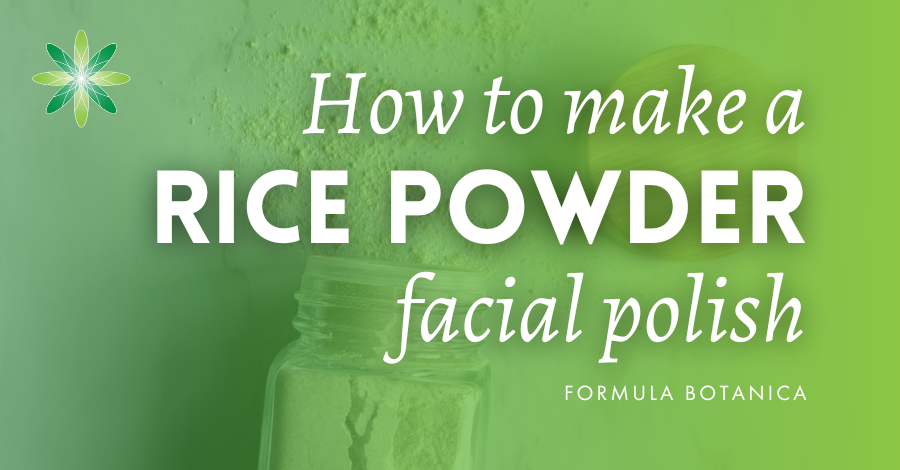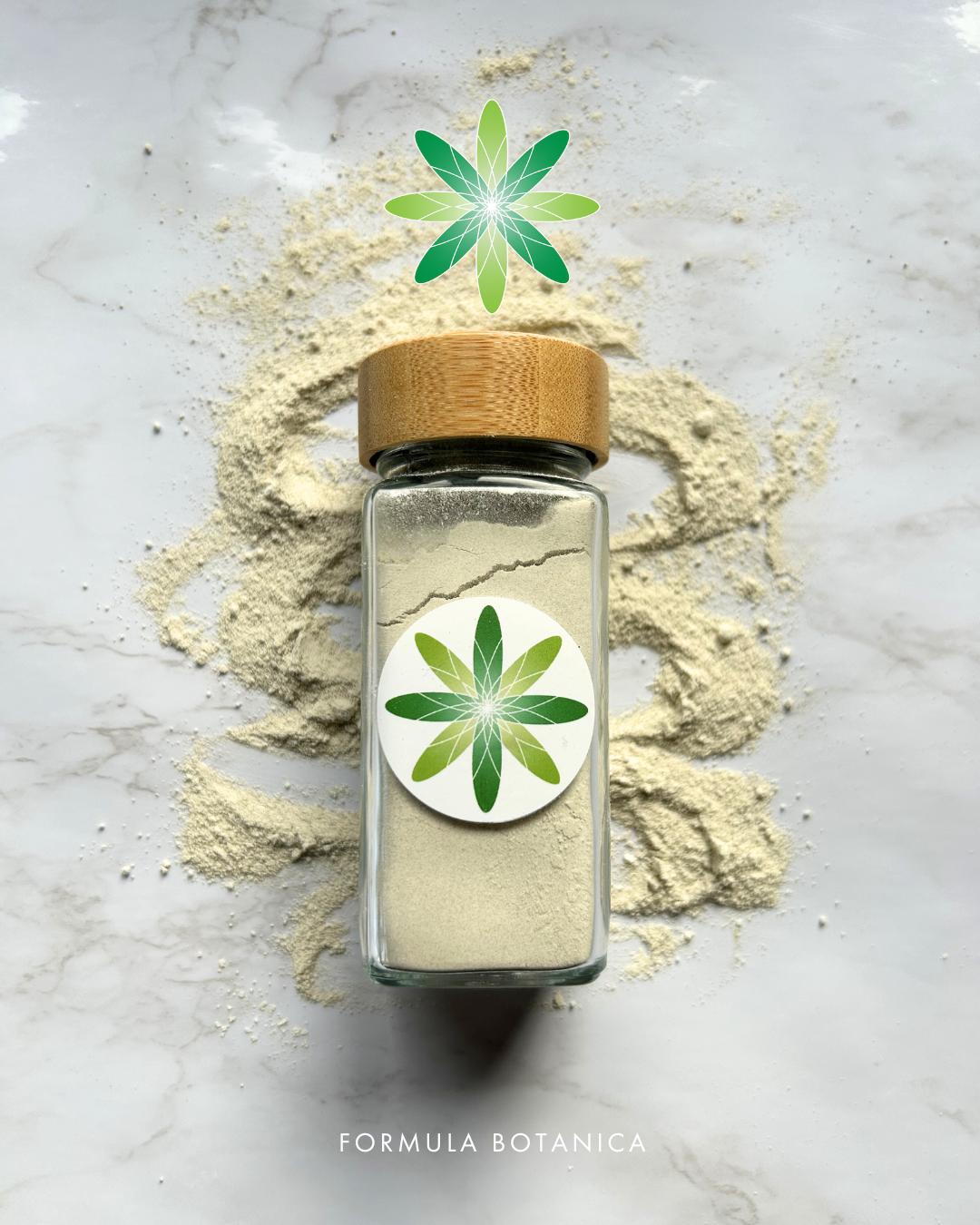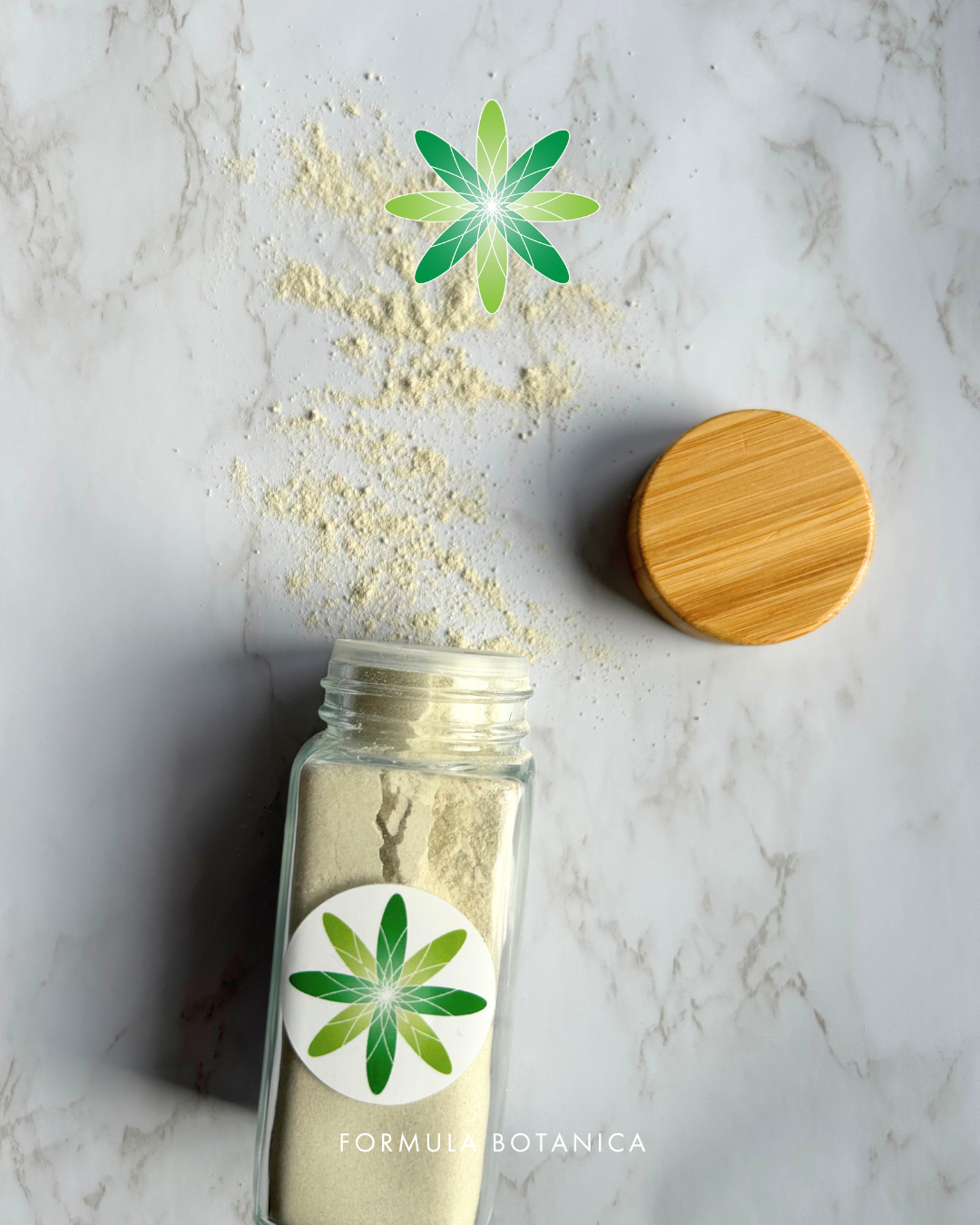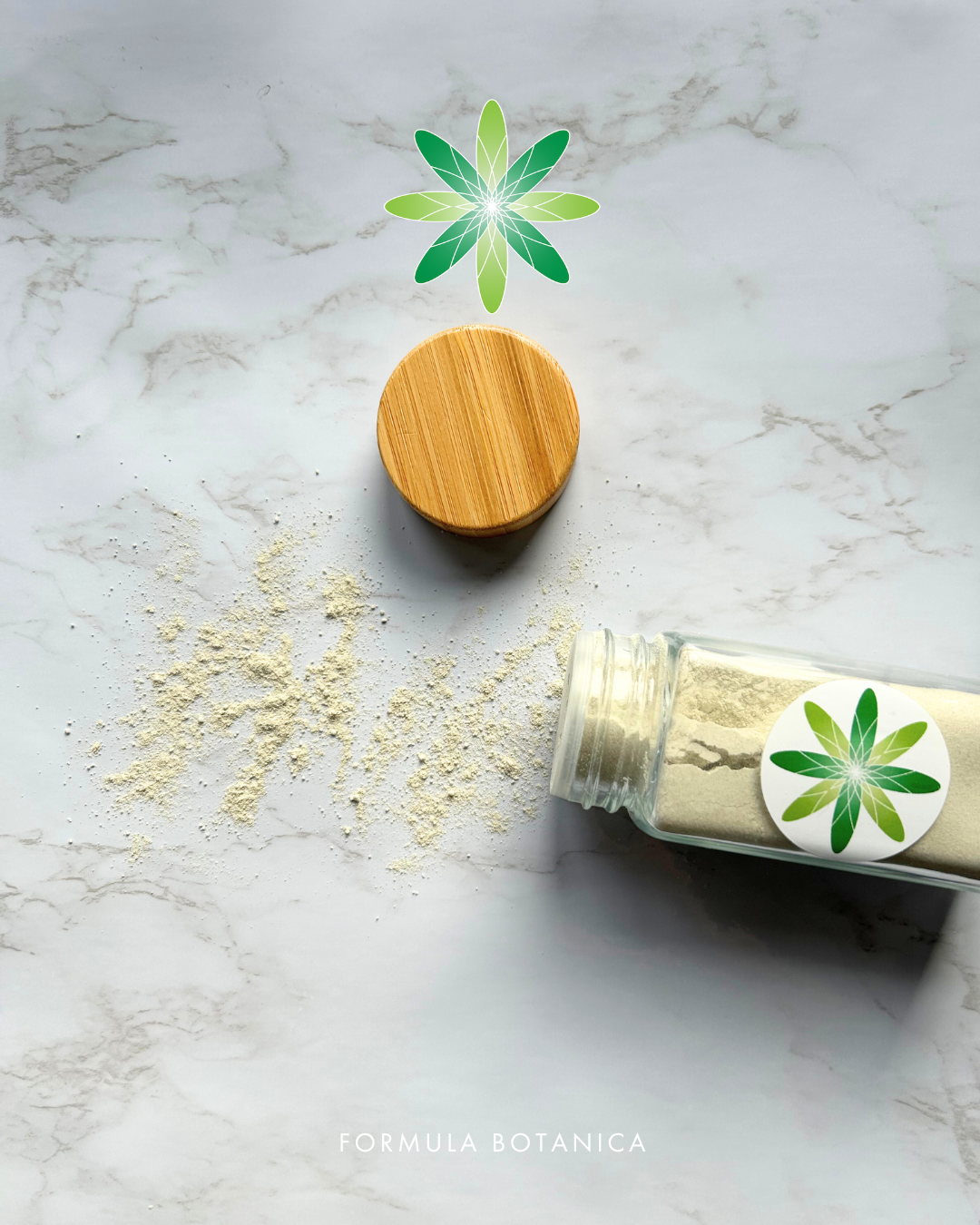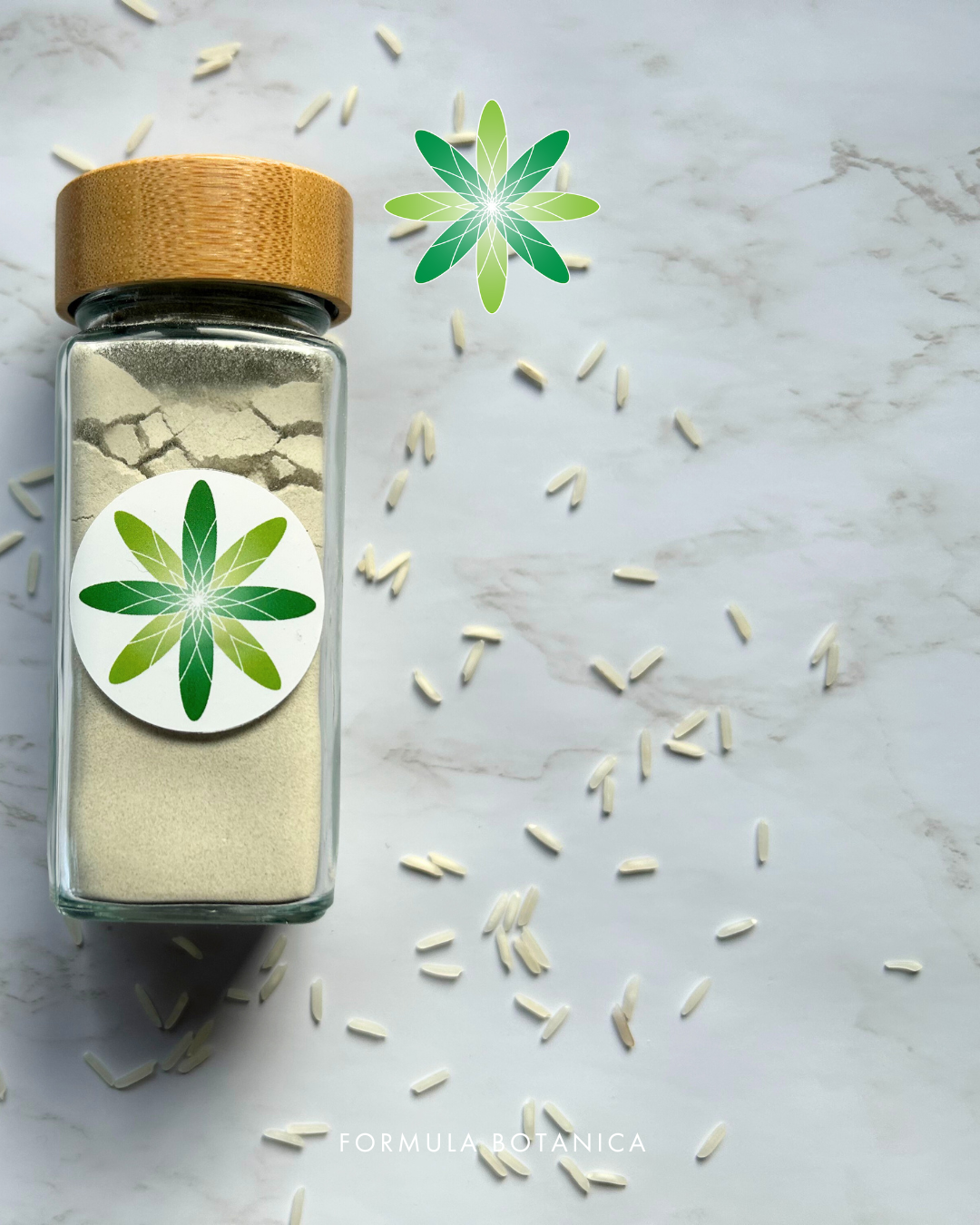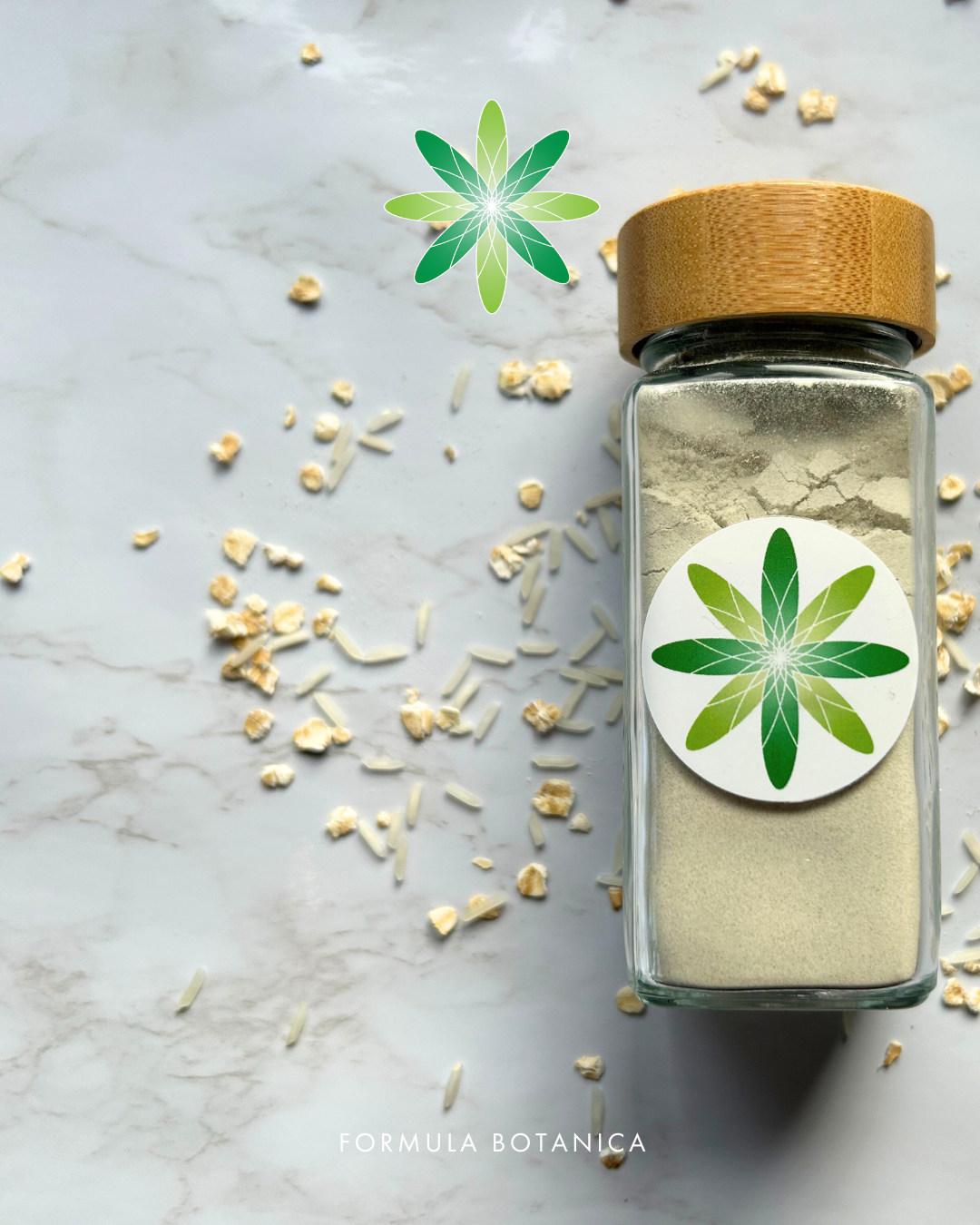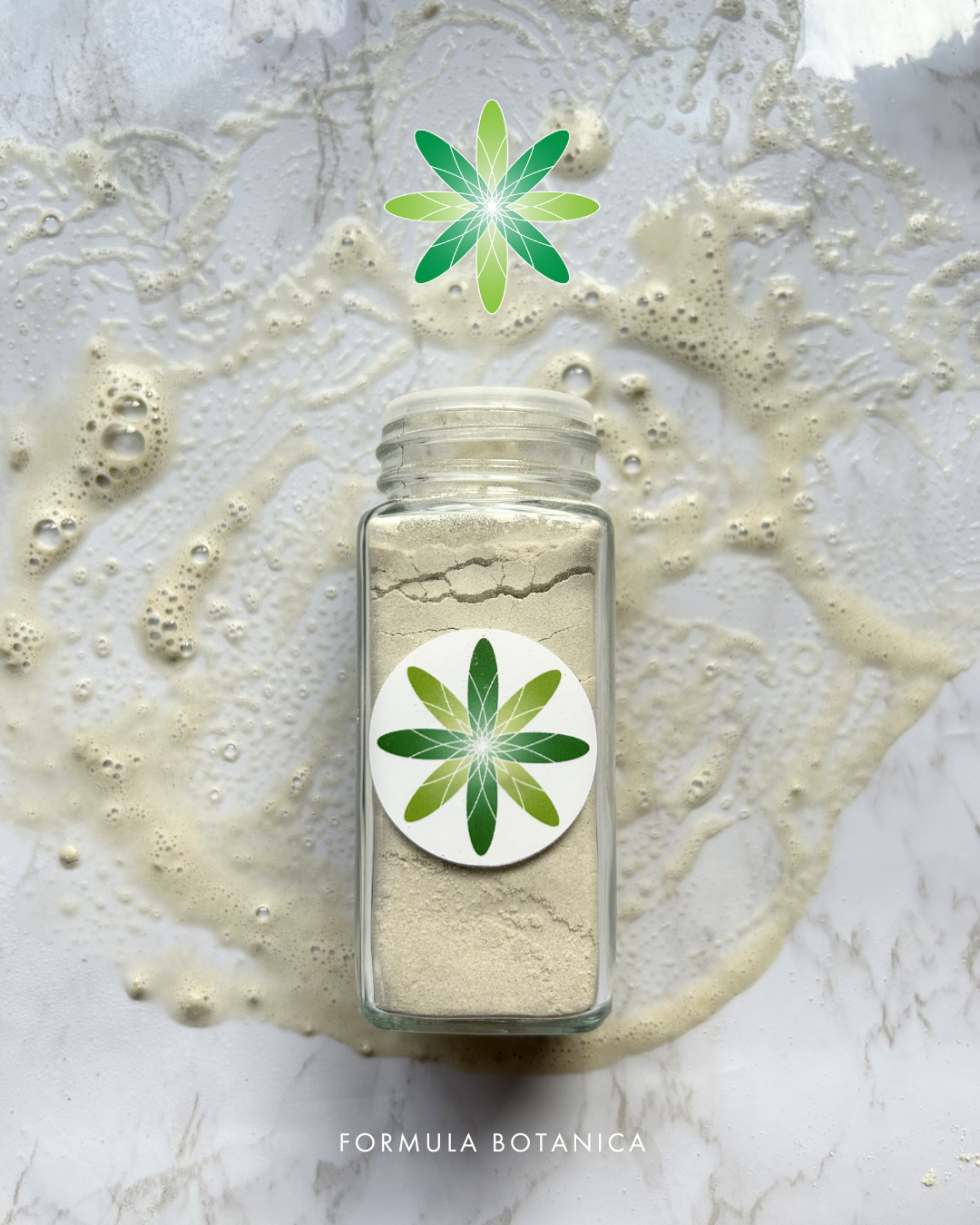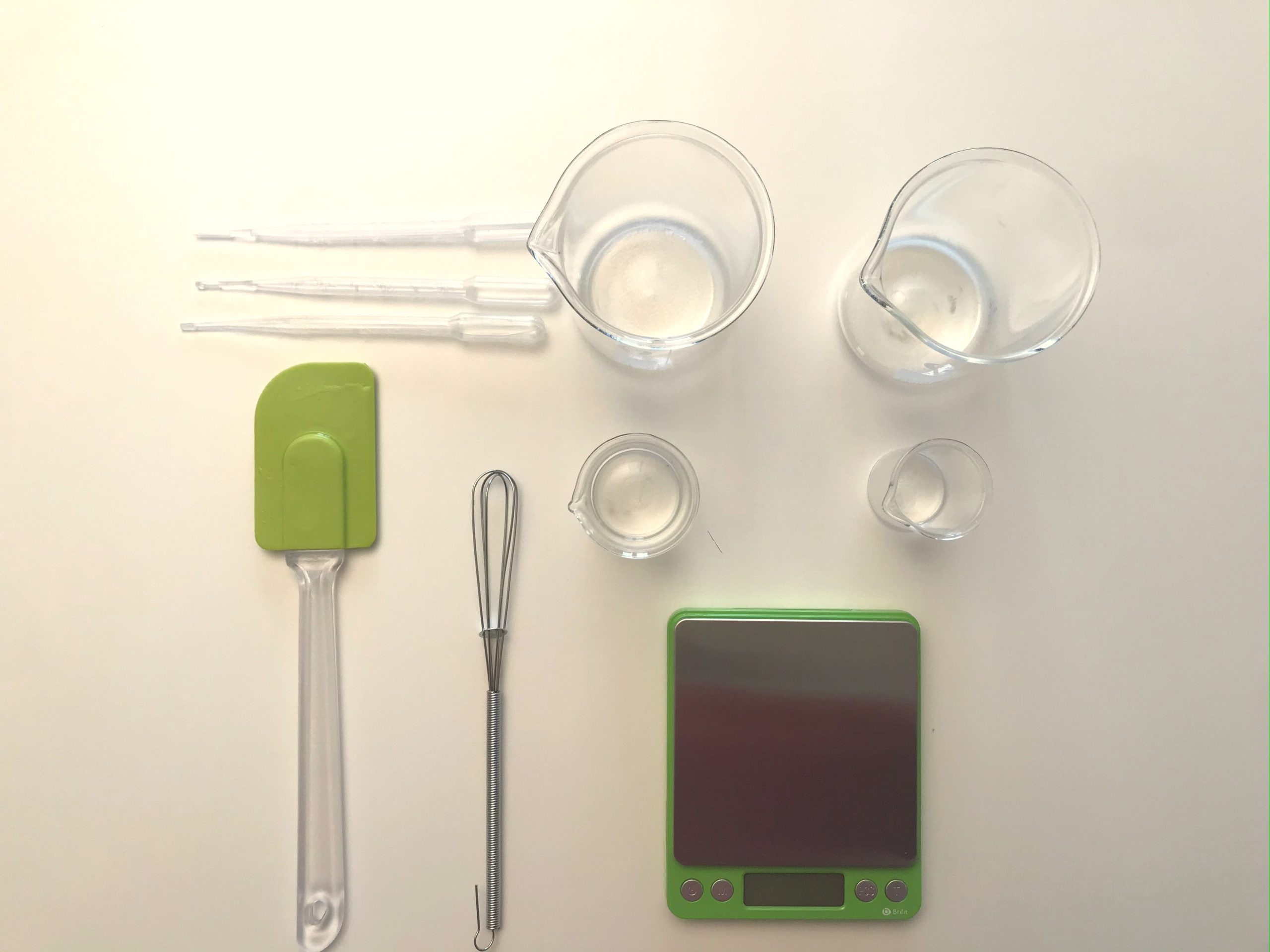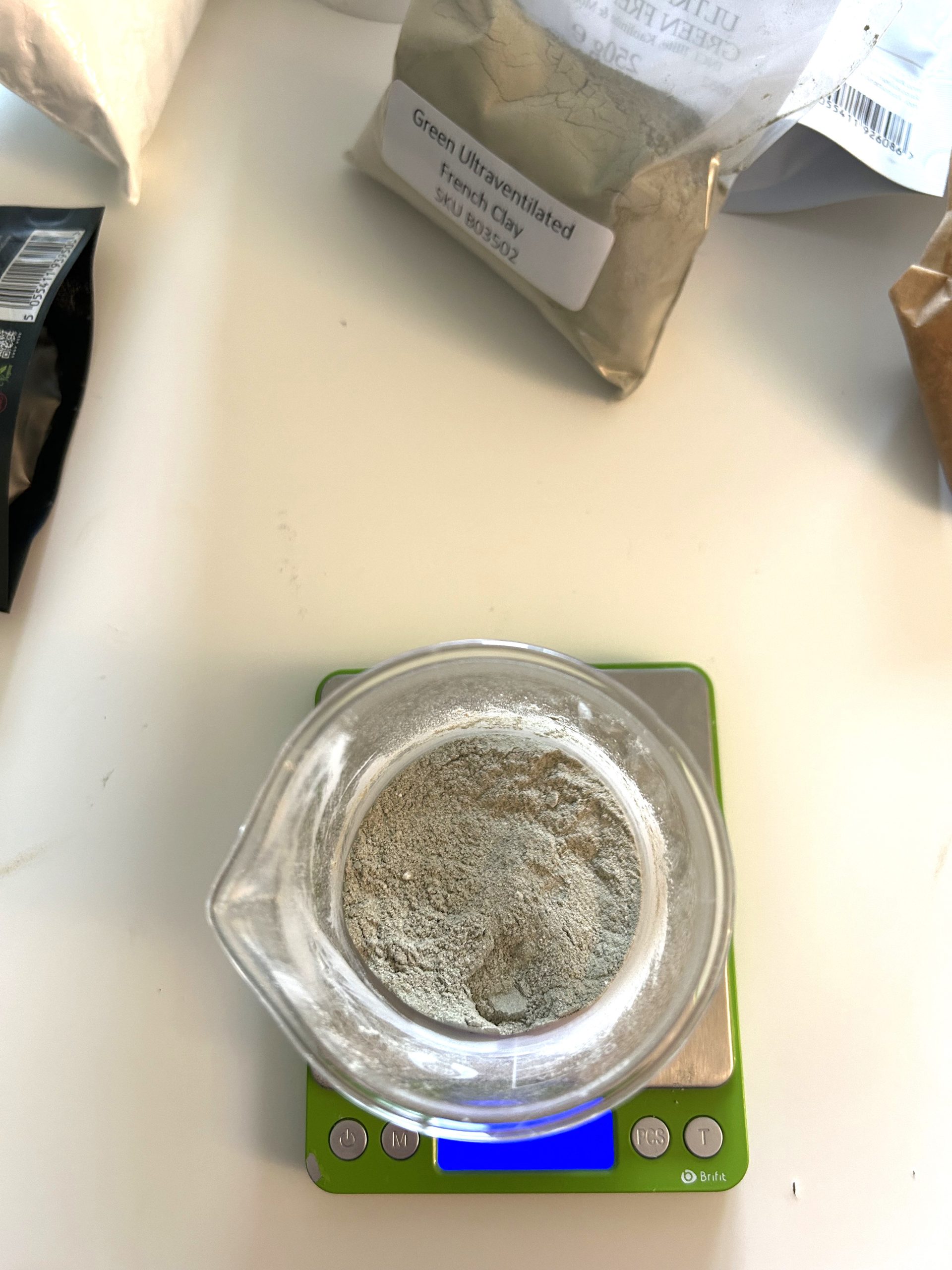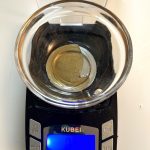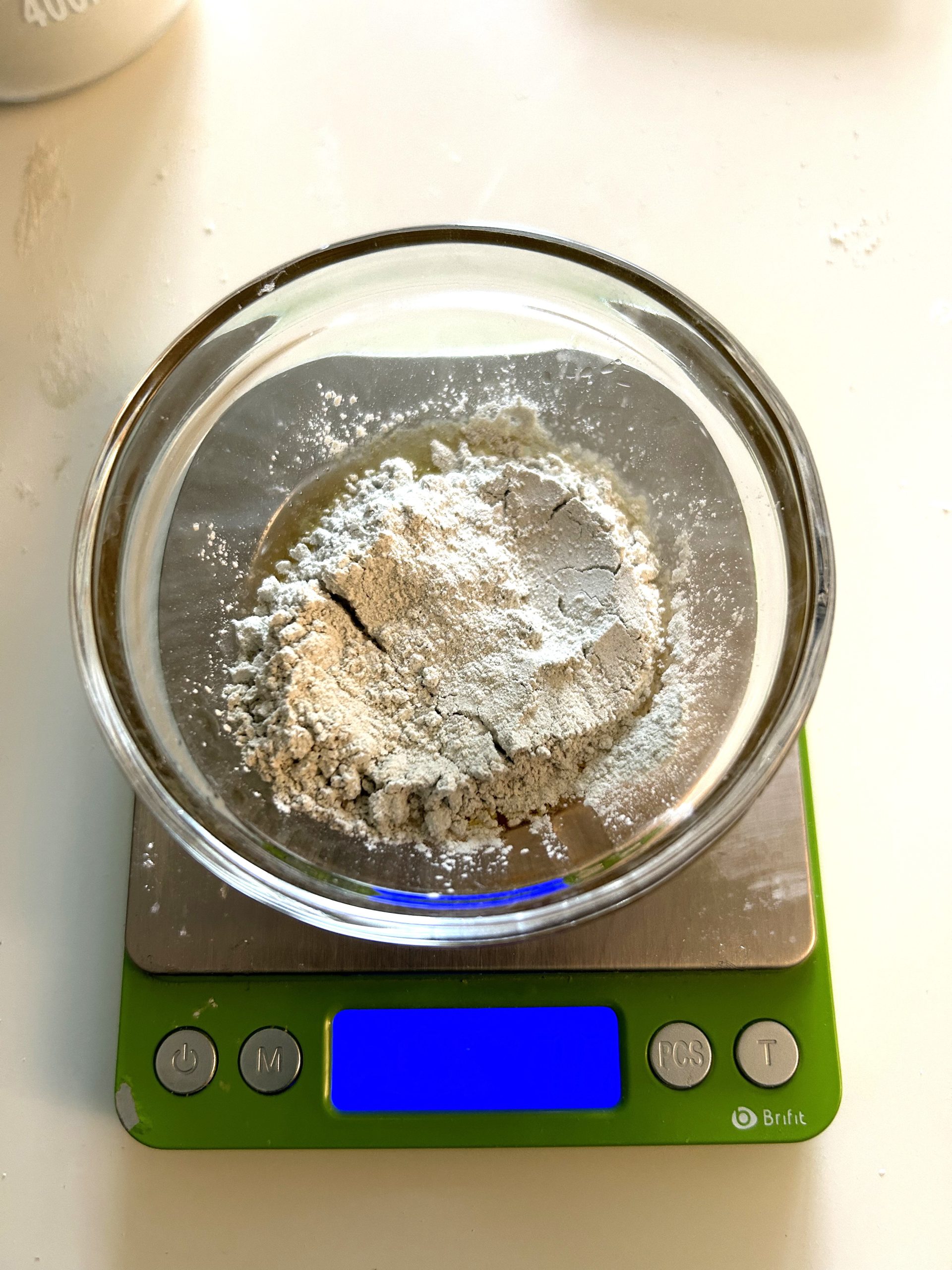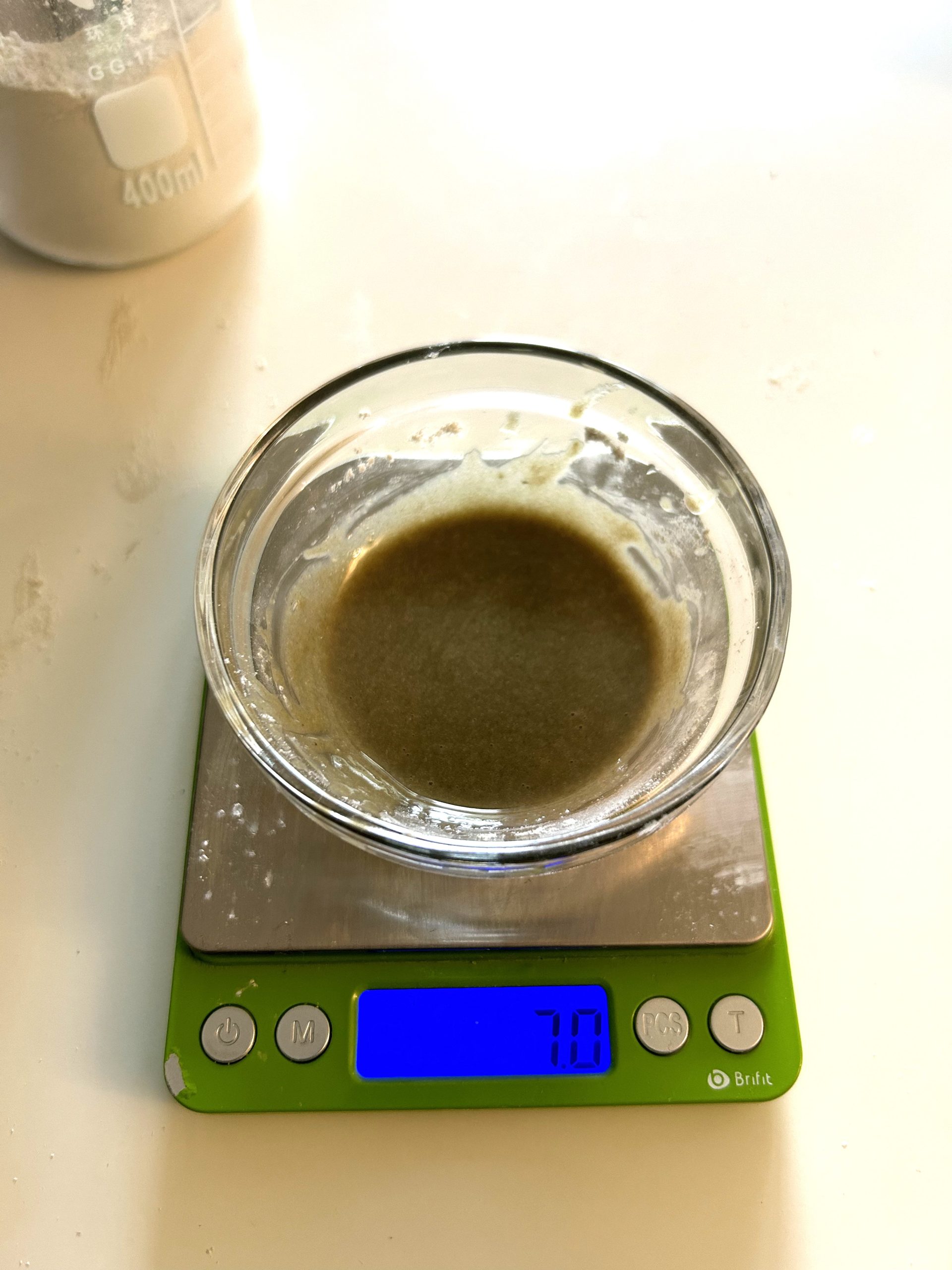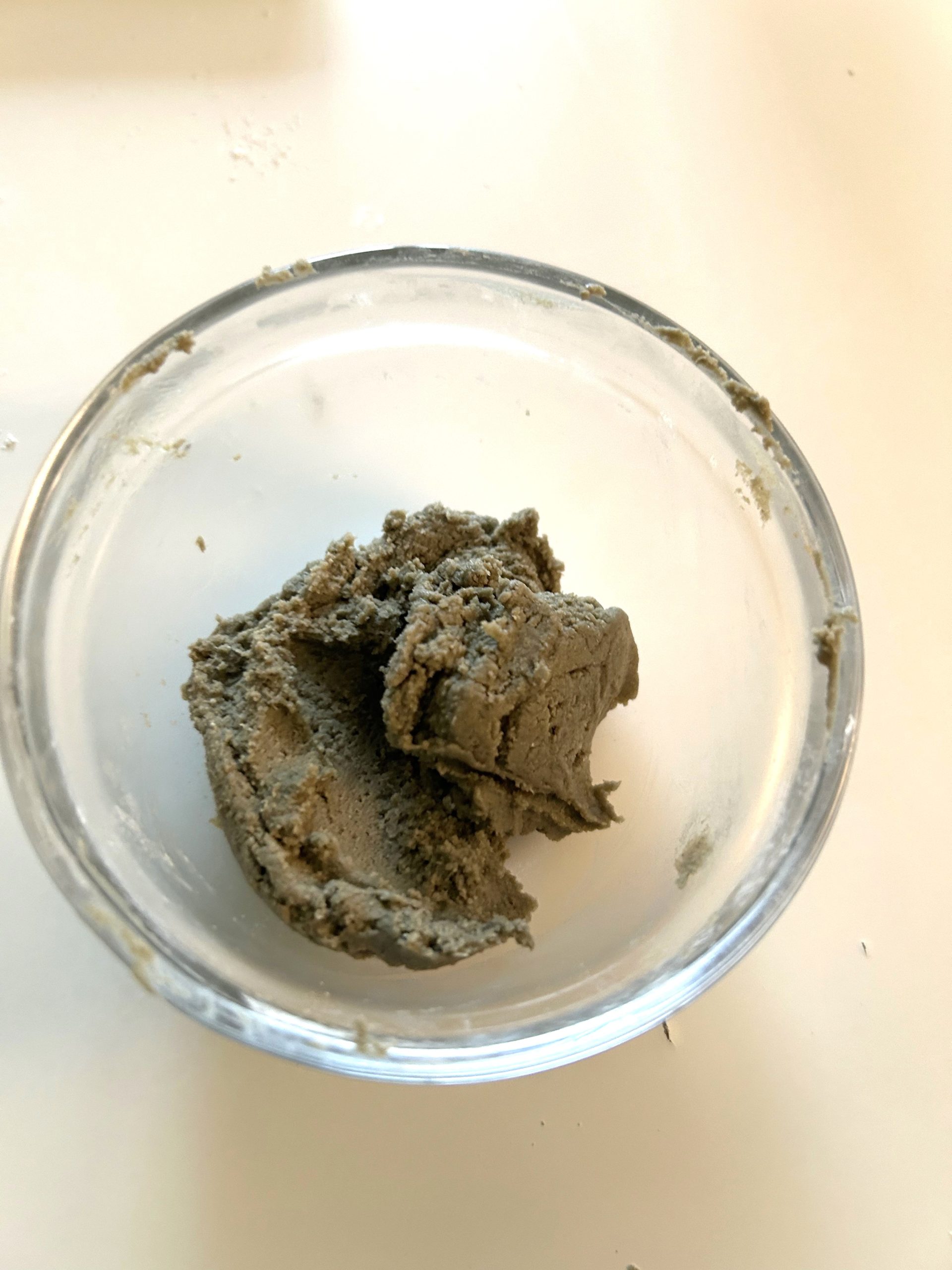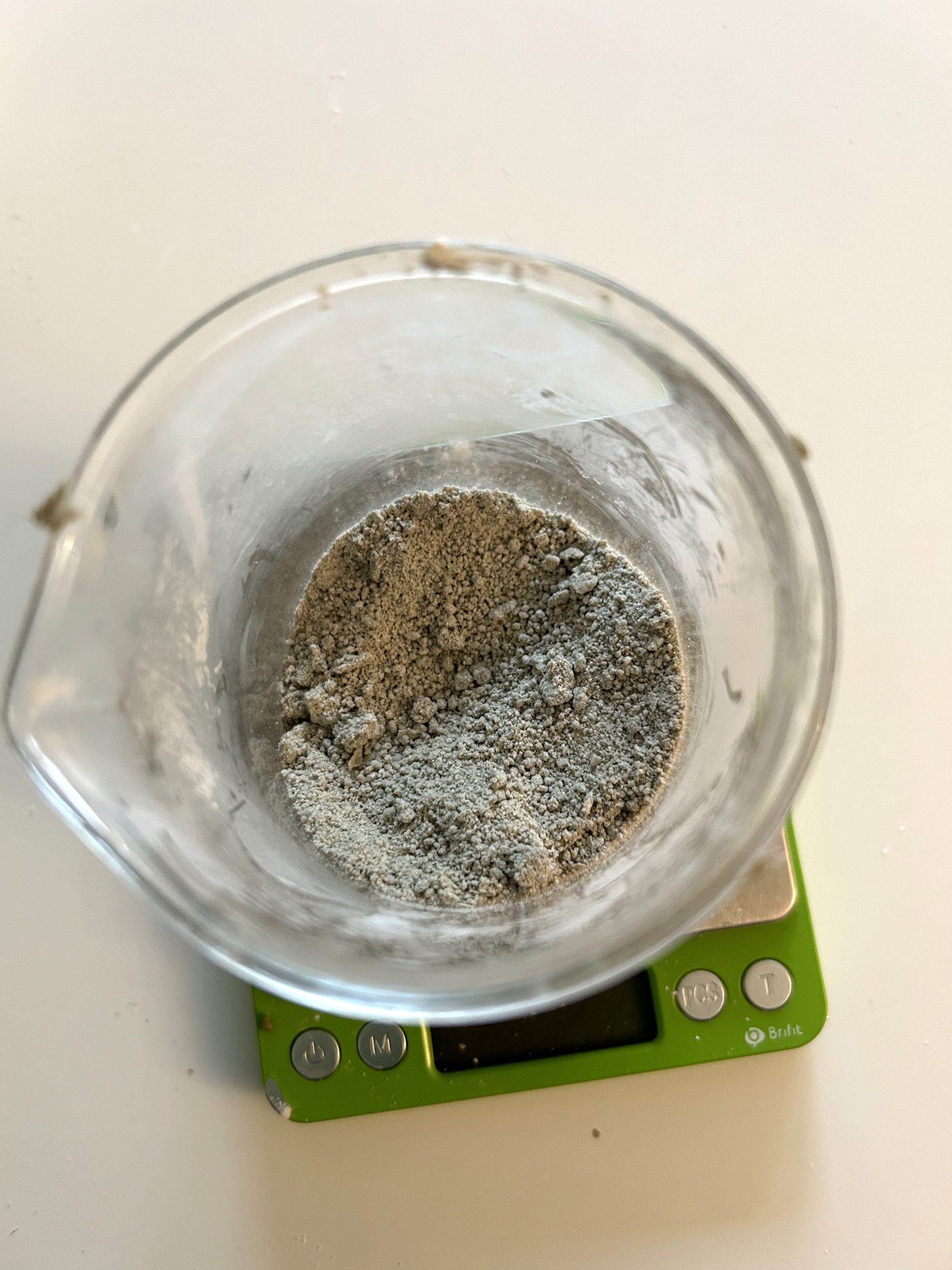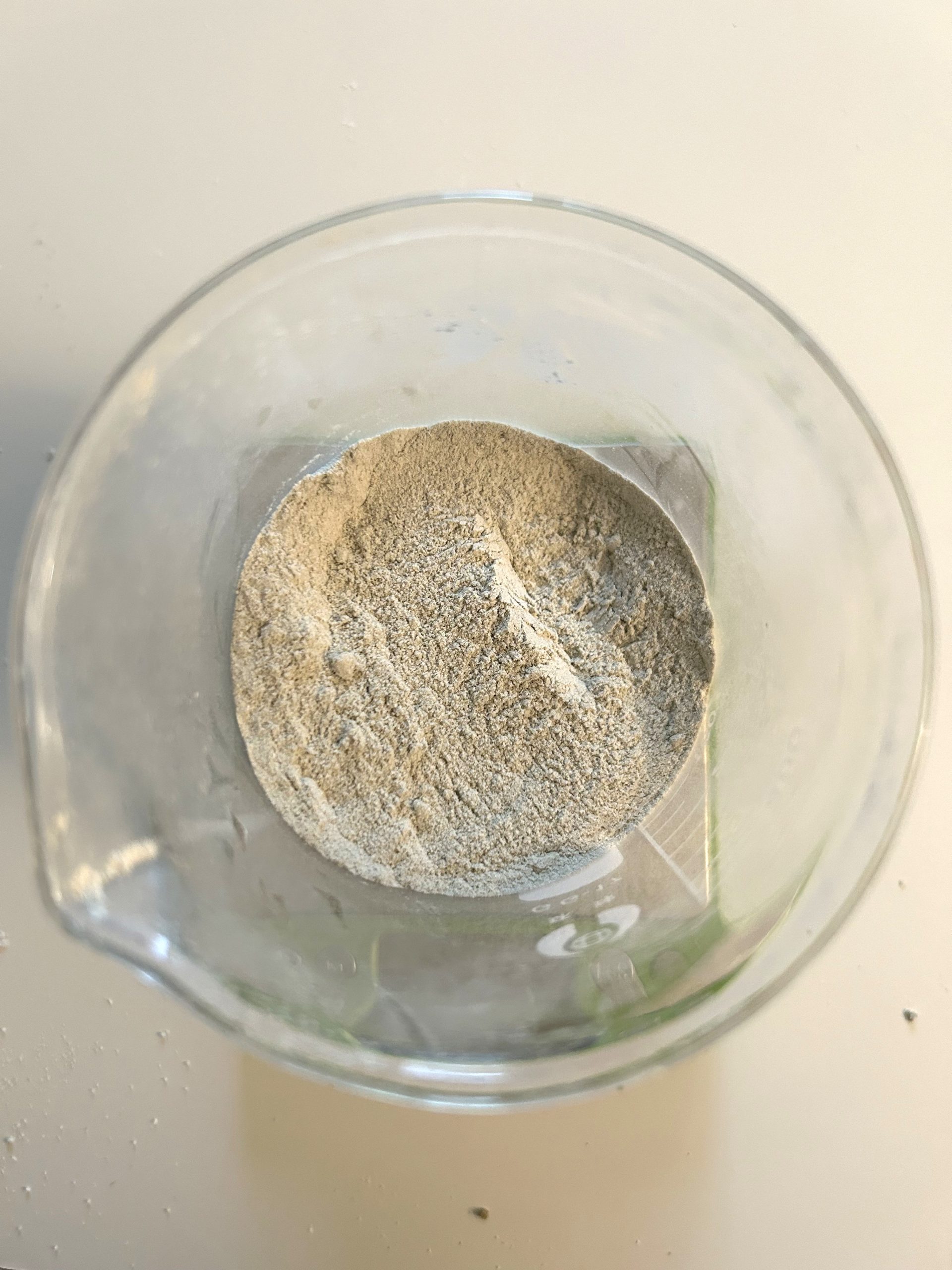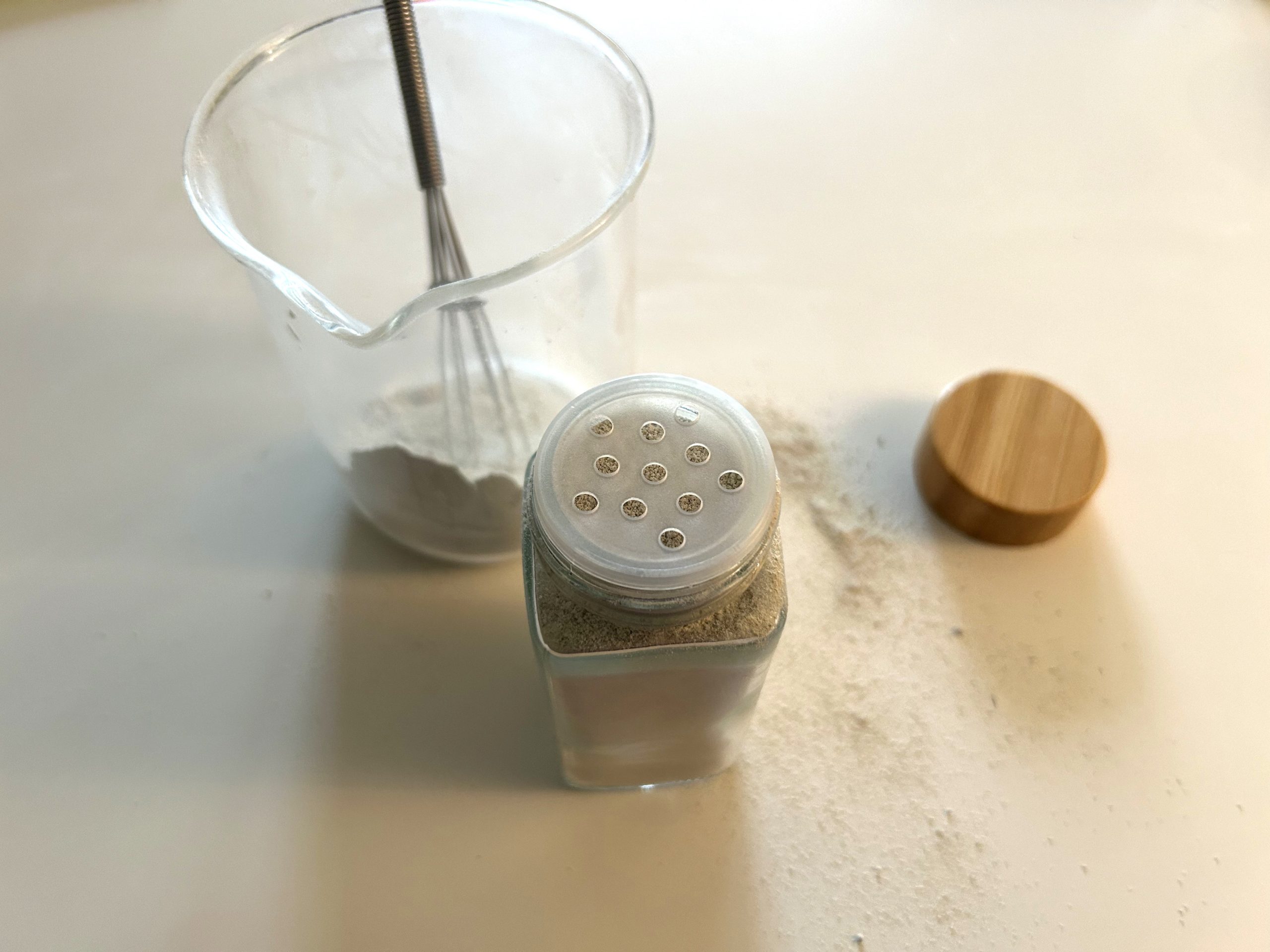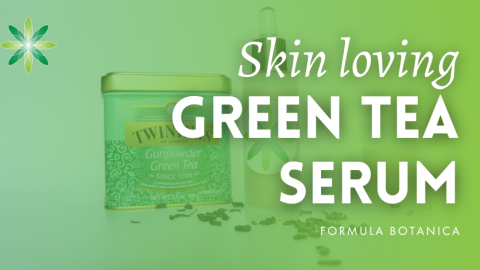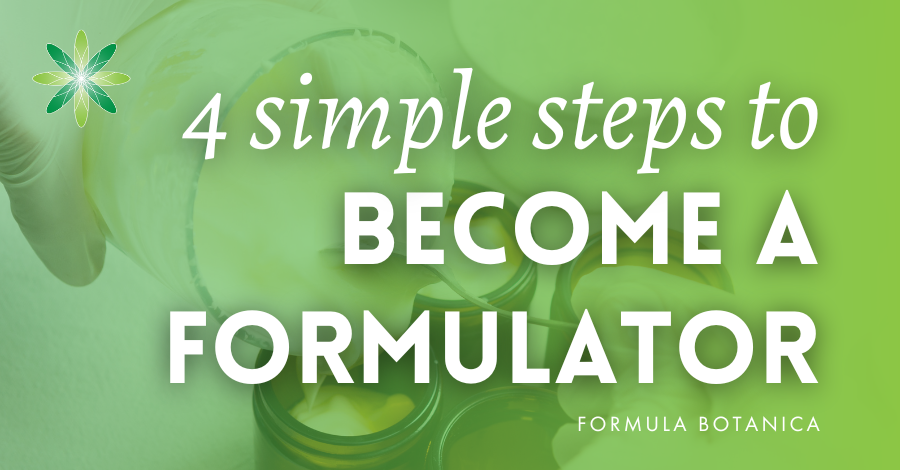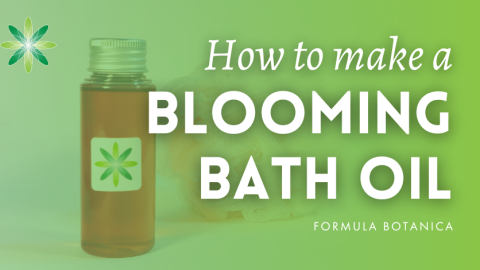Rice powder polishes are everywhere these days—you just have to open up social media to see them all over your feed. Naturally, I couldn’t resist the urge to make my own budget-friendly version of a rice facial polish.
After digging into my formulation cupboard, I found some white rice powder and started formulating. I mixed the powder with a few other active ingredients and ended up with a gentle rice & ginseng facial polish that leaves your skin soft and rejuvenated.
If you’re a skincare enthusiast like me who loves making your own beauty products, you need to make this powder cleanser. Not only does it gently cleanse and exfoliate your skin, but when mixed with water, it transforms into a rich, luxurious foam that cleanses and refreshes your skin. And it’s incredibly easy to make. Are you ready? Let’s dive in!
What is a facial polish?
A facial polish is a cosmetic product that is used to exfoliate the skin. It generally contains fine exfoliation particles and is generally gentler on the skin than more abrasive scrubs, which is why they’re typically used for the face.
There are many different forms of polishes available: gel-base, emulsion-base, oil-base or powder-base. For this rice & ginseng facial polish, I chose a powder base and added a surfactant to make the cleanser foam.
What is a powder cleanser?
A powder cleanser is exactly what it sounds like—a cleanser in powder form! When mixed with water, it transforms into a rich, creamy foam that deeply cleanses your skin without leaving it feeling stripped or dehydrated.
The rice & ginseng cleanser I have for you today also provides gentle exfoliation. The fine rice powder works to slough away dead skin cells, revealing a brighter, smoother complexion, making it the perfect all-in-one cleanser and exfoliant for glowing skin.
Why make this facial polish?
If you’re looking for a cleanser that also gives you gentle exfoliation, this rice & ginseng facial polish is for you. This cleanser will leave your skin feeling soft, rejuvenated, and glowing while creating the perfect base for layering your favourite skincare products.
Personally, I love using this polish before applying my serum and moisturiser. After letting them soak in, my skin feels hydrated and soft and has a healthy glow that lasts until the next morning. It’s like giving yourself a mini spa treatment at home!
What I love most is how easy this facial polish is to make, yet it feels like a luxurious treat. The scent is mild, with a soft, earthy, and herbal aroma, since I avoided using essential oils to minimise the risk of irritation. The cleanser forms a smooth, paste-like texture in your hands that spreads effortlessly over the skin. The exfoliation is gentle but still gets the job done, stimulating blood flow as you massage it in. If you want, you can leave it on for a few minutes as a mask for an added boost.
When you rinse it off, the polish creates a beautiful foam that cleanses deeply. After removing it with a warm flannel and rinsing it with cool water, my skin feels incredibly soft and smooth.
Key ingredients
Here are some of the key ingredients I’ve used in my rice & ginseng facial polish:
Rice powder
INCI: Oryza sativa starch
Rice powder is the star ingredient of this rice & ginseng facial polish, serving as the exfoliant in the formulation. I chose to use White Rice CRUSH™ Active, also known as Oryza sativa starch, because of its gentle cleansing and exfoliating properties, and because I had some ready to use.
White Rice CRUSH™ Active, made from upcycled white rice, is produced through a process of wet milling and sieving that separates the rice fibre, resulting in a fine powder perfect for gentle physical exfoliation. Not only does it help remove dead skin cells, but it also absorbs excess oil, leaving the skin feeling soft and refreshed.
You can find out more about the properties and benefits of rice-based ingredients in this dedicated post:
Rice water: Untap its potential in your cosmetic formulations
Siberian ginseng
INCI: Acanthopanax senticosus root extract
Next up, I decided to use Siberian ginseng. Originally, I wanted to include enzymes but decided to use ginseng instead as it’s such a versatile cosmetic ingredient. Ginseng is well-known for its ability to energise the skin, boost elasticity, and increase hydration, all while giving your complexion a healthy glow.
Ginseng is often included in anti-ageing products because of its ability to boost collagen production. It also works great for brightening the skin and encouraging regeneration, making it a great addition to this facial polish.
Oat powder
INCI: Hydrolyzed oat protein
I also decided to use oat powder as one of the active ingredients, because of its renowned soothing, antioxidant and hydrating properties. Oat powder is packed with skin-loving nutrients, including amino acids, which work wonders to nourish and moisturise dry skin.
Studies have shown that skincare products containing oat powder can effectively hydrate the skin and reduce dryness, making it perfect for calming and replenishing the skin’s moisture barrier. Find out more about the skin barrier below:
Skin barrier 101: essential guide for natural cosmetic formulators
I also used oat oil in my rice & ginseng facial polish for its nourishing and soothing properties.
Additional ingredients
In addition to the star ingredients, I have also included a few key functional ingredients like kaolin clay, SCI powder, tapioca starch, green clay, and vitamin E to elevate the formula. Here’s a quick breakdown:
SCI surfactant
INCI: Sodium cocoyl isethionate
This surfactant gives the cleanser that luxurious, foamy texture that makes washing your face feel so satisfying. Find out more about surfactants below:
Tapioca starch powder
INCI: Tapioca starch
This starch adds a silky-soft feel to the product’s lather, helping your skin to feel smooth and soft after use.
Green clay
INCI: Illite, Kaolinite, and Montmorillonite
Green clay is excellent for drawing out oil, dirt, and impurities, helping to boost the cleansing power of the polish and leaving your skin fresh and balanced.
I’ve also included some antioxidants to help protect the skin from free radicals and slow down the signs of premature ageing. They’re also great for protecting your formulation from oxidation. I’ve added allantoin and vitamin E to soothe the skin and provide those essential antioxidant benefits.
To top it off, I’ve added magnolia bark extract, a powerful active known for its benefits in helping acne-prone or breakout-prone skin.
Want to dive deeper into these ingredients? Check out these helpful posts:
Natural formulation 101: Beginner’s guide to skincare ingredients
My formulation process
Making this rice & ginseng facial polish was an enjoyable and smooth experience! One thing that always surprises me is how much volume powder formulations take up—you definitely need a container at least twice the size of your batch for mixing. I ended up using a container four times bigger to give myself plenty of room. I lost a little powder when transferring the final product, but switching to a funnel made it much easier.
The moment I knew this formulation was going to be amazing? When I filled it into a spice jar with a shaker attachment—it dispensed the powder perfectly! The texture is a soft, fine powder with a bit of grit for gentle exfoliation, and it turns into a smooth, adjustable paste when mixed with water.
One small change I made was switching from a mini whisk to a spatula midway through, as the mixture started to clog the whisk. But overall, it was a super easy and enjoyable process. I love the finished product and I know you will love it too. And now, finally, the moment you’ve been waiting for: the formula and formulation method.
Free formulation: Rice & ginseng facial polish
Makes: 100g
Formulation: This is a cold-process formulation
Level: Beginner-friendly
| Phase | Ingredients | INCI | Weight (g) |
| A | Kaolin clay | Kaolin | 15.00 |
| A | SCI powder | Sodium Cocoyl Isethionate | 20.00 |
| A | Tapioca starch powder | Tapioca Starch | 20.00 |
| B | Green clay | Illite, Kaolinite, and Montmorillonite | 15.95 |
| B | White rice crush – Rice powder exfoliant | Oryza Sativa Starch | 15.00 |
| B | Allantoin | Allantoin | 1.00 |
| B | Oat powder | Hydrolyzed Oat Powder | 1.00 |
| B | Siberian ginseng powder | Acanthopanax Senticosus Root Extract | 5.00 |
| B | Magnolia bark extract | Magnolia Officinalis Bark Extract | 0.05 |
| C | Oat oil | Avena Sativa Kernel Oil | 5.00 |
| C | Vitamin E | Tocopherol | 2.00 |
| Total: 100.00 |
Equipment:
- Glass beakers
- Glass rod
- Mini whisk
- Pipettes
- Coffee or powder grinder
- Spatula
- Pestle & mortar
- Scales
- Dust mask
- Gloves
- Powder shaker bottle
Formulation method: Rice & ginseng facial polish
Follow the 10 easy steps below to create your own rice & ginseng facial polish.
Step 1: Prepare your workspace
Firstly, ensure that your work area is clean and your equipment has been sanitised. We are working with very fine powders so make sure to wear a dust mask to prevent inhalation as the powders could irritate your airways.
Step 2: Weigh and mix the active powders
Tare your scales and weigh the active powders (green clay, rice powder, allantoin, oat powder, ginseng powder, and bark extract) into a glass bowl or large beaker. Make sure your beaker is much larger than your batch size to give you plenty of room for mixing—I’ve used a 400ml and a 250ml beaker for a 100g batch.
Stir the powders together thoroughly until they’re fully combined. If you notice any lumps, use a coffee grinder to smooth the powder out. For best results, start with the powders in the smallest amounts and gradually work your way up, ensuring even mixing at each step.
Step 3: Add the SCI, kaolin and tapioca starch powders
Next, add the SCI, kaolin and tapioca starch powders to your beaker or bowl. Stir the powders together using a glass rod until fully combined.
Step 4: Weigh the oat oil and vitamin E
In a different beaker or bowl, weigh the oat oil and the vitamin E. Stir them with a mini whisk until fully combined.
Step 5: Combine the oils and the powders
Now it’s time to combine the oils and powders using a technique called geometric dilution. Start by adding the oils to a mortar (or a glass bowl if that’s easier), then add an equal amount of the powder blend to the oils. The key here is to match the volume of the powder to the oil, which helps ensure thorough and even mixing right from the start. This step is important for achieving a smooth, consistent texture throughout the final product.
Step 6: Mix evenly
Thoroughly mix the oil and powder base, distributing the oil throughout the powder. If you’re not using a mortar and pestle, a mini whisk works well at first. However, after the second addition of powder, the mixture can get stuck in the whisk, so switching to a spatula will make it much easier to blend everything smoothly.
Step 7: Add more powder
Gradually add more powder to the mixture in small increments, each time adding an amount equal to the current volume in the bowl. Essentially, you’re doubling the amount of powder with each addition. This method ensures the ingredients blend smoothly and evenly, giving you a consistent final product.
Step 8: Mix well
Mix your mixture each time you add more powder to the bowl.
Step 9: Add the remainder of the powder to the oil
Continue adding the remaining powder until the entire base is combined with the oil and everything is fully combined. If you still notice any clumps after mixing, give the blend a quick pulse in a coffee grinder. This will help you achieve a smooth, uniform texture.
Step 10: Package & label
And there you have it! Your very own rice & ginseng facial polish. All you have to do is transfer your finished cleanser to your chosen container and label it. I hope you enjoy it as much as I do!
FAQ/Substitutions
What are the benefits of a powder cleanser over another cleanser?
Powder cleansers have some great advantages. Since they don’t contain any water, they can include clays and plant extracts without needing strong preservatives. They’re also incredibly travel-friendly—lightweight, compact, and leak-proof. Best of all, powder cleansers offer a deep cleanse while still being gentle, leaving your skin feeling clean and refreshed without stripping away moisture. Just remember to store them in a tightly sealed container to prevent contamination.
How do you use a facial polish/powder cleanser?
Facial polishes are typically used 1-2 times per week to gently exfoliate your skin, though you can adjust the frequency based on your skin’s needs. Simply massage a small amount onto damp skin in circular motions, then rinse off for a smooth, radiant complexion.
Can I use other exfoliating ingredients?
Yes, you can. You can swap out the rice powder for other gentle exfoliants like olive seed powder, activated charcoal, or jojoba beads. These alternatives offer a similar exfoliating effect while still being kind to your skin.
Can I use another starch?
Yes, you can use arrowroot powder or cornstarch instead of tapioca starch.
Can I use another clay?
Yes, you can use bentonite or pink clay instead of green clay. You could even increase the amount of kaolin if you’d prefer.
Can I use other active ingredients?
You can use other active ingredients to customise your formulation. For example, you can swap ginseng with other powdered actives, though it may alter the benefits of the final product. Other options include banana powder, seaweed powder, or coconut milk powder.
Learn more about powders
See how easy and fun this was? In just a few minutes, you’ve formulated your very own natural facial polish. If you enjoyed this post, please make sure to leave us a comment below and share your powder formulation with us in our Online Classroom.
If you’d like to find out more about powders, you can check out our exclusive Powder Formulation Mini Lab on our membership-only site, the Lab at Formula Botanica.
Suggested suppliers
Many of the suppliers below ship internationally.
Aroma-Zone (EU)
Aromantic (UK)
Alexmo Cosmetics (EU)
Manske (EU)
The Soap Kitchen (UK)
Ellemental (EU)
Lotioncrafter (USA)
Essential Labs (USA)
Go Native NZ (New Zealand)
Naturally Balmy (UK)
O&3 – The Oil Family (UK/EU)
Soap & More (Canada)
Handymade (EU)
Leave us a comment

Brooke Medhurst is a Tutor at Formula Botanica. Find out more about the Formula Botanica Team.

